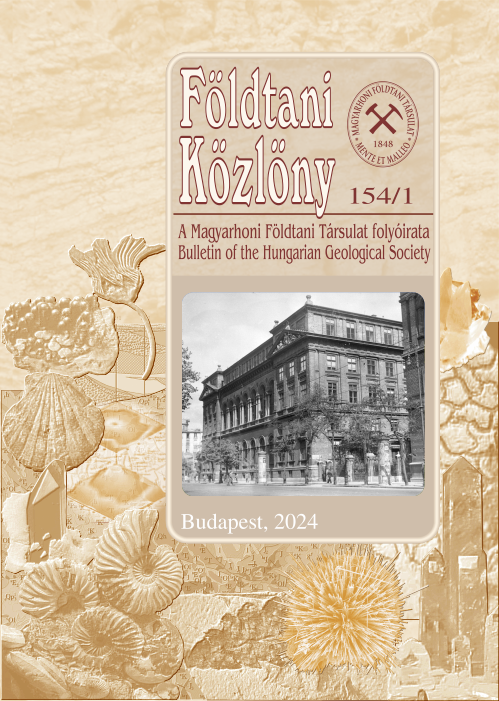Indication of hypersaline palaeofluid migration in the fracture system of the Baksa Complex
Abstract
The Baksa Complex is a polymetamorphic basement complex in the SW part of the Tisza Unit. The main borehole of
the area (Baksa–2) enabled the exploration of various polymetamorphic rocks of the complex in its 1200 m thickness.
However, although some details are known about the metamorphic evolution of the basement rocks, there is only scarce
information about their post-metamorphic evolution, brittle deformation and cementation processes. In this study detailes
are presented about petrographic and fluid inclusion analysis of the quartz-carbonate fracture infillings, carried out on the
upper 800 m of the Baksa–2 borehole. In the quartz-carbonate veins a qtz+do+cc1+cc2 mineral sequence was observed. The
quartz crystals contained several fluid inclusion assemblages aligned along their growth zones. The Th values of the FIAs
are between 70–130 °C, while in the outermost zone they vary in the 50–90 °C interval. The dissolved salt content is very
high in each fluid inclusion, exhibiting an NaCl dominant composition (20.1–25.6 NaCl wt %) with a minor amount of CaCl2
(1.5–6.0 wt %). It was not possible to measure significant differences between growth zones with respect to the concentration
and composition of the dissolved salts. The respective CH4 and N2 contents were detected in the vapour phases of each FIA
by Raman microspectroscopy. In the do and cc1 phases a high frequency of fluid inclusions were found with homogenization
temperatures having intervals of 130–180 °C. The Tm(Ice) data (–25 – –22 °C) indicated a high salt concentration, similar to
those of the quartz phase. The Raman spectra also suggest that NaCl is the dominant dissolved salt in these fluid inclusions.
These salt-rich palaeofluids probably originated from the Permian and/or Triassic evaporites of the region and the implies
significant fluid migration between the crystalline basement and the overlying sediments.











